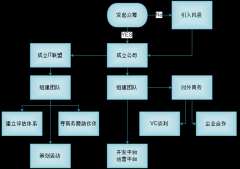看到一份很受欢迎的,根据自己的理解进行了翻译,但能力有限,对一些JS代码理解不了,如有错误,望斧正。
HTML 语义化标签HTML5 提供了很多语义化元素,更好地帮助描述内容。希望你能从这些丰富的标签库中受益。
<!-- bad --> <div> <div> <div> <h1>Blog post</h1> <p>Published: <span>21st Feb, 2015</span></p> </div> <p>…</p> </div> </div> <!-- good --> <main> <article> <header> <h1>Blog post</h1> <p>Published: <time datetime="2015-02-21">21st Feb, 2015</time></p> </header> <p>…</p> </article> </main>
请确保正确使用语义化的标签,错误的用法甚至不如保守的用法。
<!-- bad --> <h1> <figure> <img alt=Company src=logo.png> </figure> </h1> <!-- good --> <h1> <img alt=Company src=logo.png> </h1>
简洁确保代码简洁性,不要再采用XHTML的旧做法。
<!-- bad --> <!doctype html> <html lang=en> <head> <meta http-equiv=Content-Type content="text/html; charset=utf-8" /> <title>Contact</title> <link rel=stylesheet href=style.css type=text/css /> </head> <body> <h1>Contact me</h1> <label> Email address: <input type=email placeholder=you@email.com required=required /> </label> <script src=main.js type=text/javascript></script> </body> </html> <!-- good --> <!doctype html> <html lang=en> <meta charset=utf-8> <title>Contact</title> <link rel=stylesheet href=style.css> <h1>Contact me</h1> <label> Email address: <input type=email placeholder=you@email.com required> </label> <script src=main.js></script> </html>
可用性可用性不应该是事后才考虑的事情。你不必成为WCAG专家来改进网站,你可以通过简单的修改做出不错的效果,例如;
<!-- bad --> <h1><img alt="Logo" src="logo.png"></h1> <!-- good --> <h1><img alt="My Company, Inc." src="logo.png"></h1>
语言定义语言和字符编码是可选项,建议在文档级别处定义。使用UTF-8编码。
<!-- bad --> <!doctype html> <title>Hello, world.</title> <!-- good --> <!doctype html> <html lang=en> <meta charset=utf-8> <title>Hello, world.</title> </html>
性能除非有非要在加载内容前加载脚本的必要性由,不然别这样做,这样会阻碍网页渲染。如果你的样式表很大,必须独立放到一个文件里。两次HTTP 请求不会显著降低性能。
<!-- bad --> <!doctype html> <meta charset=utf-8> <script src=analytics.js></script> <title>Hello, world.</title> <p>...</p> <!-- good --> <!doctype html> <meta charset=utf-8> <title>Hello, world.</title> <p>...</p> <script src=analytics.js></script>
CSS 分号不能漏写分号
/* bad */ div { color: red } /* good */ div { color: red; }
盒模型
整个文档的盒模型应该要相同,最好使用global * { box-sizing: border-box; }定义。不要修改某个元素的盒模型。
/* bad */ div { width: 100%; padding: 10px; box-sizing: border-box; } /* good */ div { padding: 10px; }
流尽量不要改变元素默认行为。保持默认的文本流。比如,移出一个图片下面的一个白块,不影响原本的显示:
/* bad */ img { display: block; } /* good */ img { vertical-align: middle; }
类似的,尽量不要改变浮动方式。
/* bad */ div { width: 100px; position: absolute; right: 0; } /* good */ div { width: 100px; margin-left: auto; }
定位有很多CSS定位方法,尽量避免使用以下方法,根据性能排序:
display: block; display: flex; position: relative; position: sticky; position: absolute; position: fixed;
选择器紧密耦合DOM选择器,三个层级以上建议加class:
/* bad */ div:first-of-type :last-child > p ~ * /* good */ div:first-of-type .info
避免不必要的写法:
/* bad */ img[src$=svg], ul > li:first-child { opacity: 0; } /* good */ [src$=svg], ul > :first-child { opacity: 0; }
指明不要让代码难于重写,让选择器更精确,减少ID、避免使用!important
/* bad */ .bar { color: green !important; } .foo { color: red; } /* good */ .foo.bar { color: green; } .foo { color: red; }
覆盖覆盖样式会使维护和调试更困难,所以要尽量避免。
/* bad */ li { visibility: hidden; } li:first-child { visibility: visible; } /* good */ li + li { visibility: hidden; }
继承不要把可继承的样式重复声明:
/* bad */ div h1, div p { text-shadow: 0 1px 0 #fff; } /* good */ div { text-shadow: 0 1px 0 #fff; }
简洁保持代码的简洁。使用属性缩写。不必要的值不用写。
 相关文章
相关文章

 精彩导读
精彩导读 热门资讯
热门资讯 关注我们
关注我们
